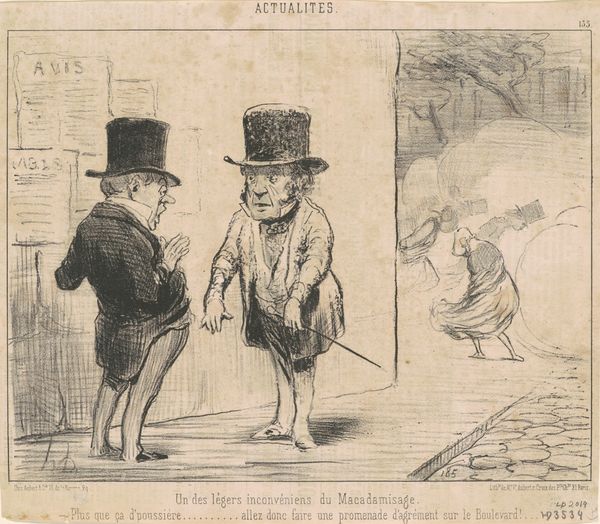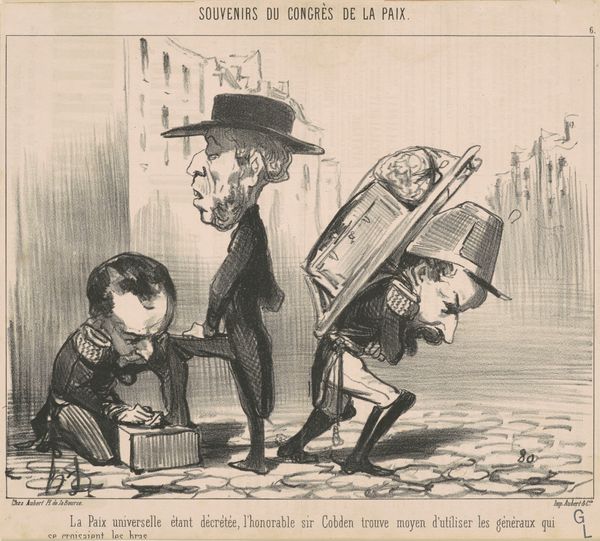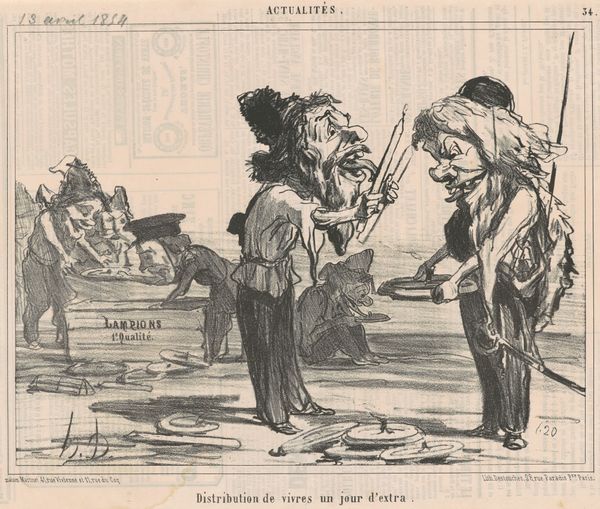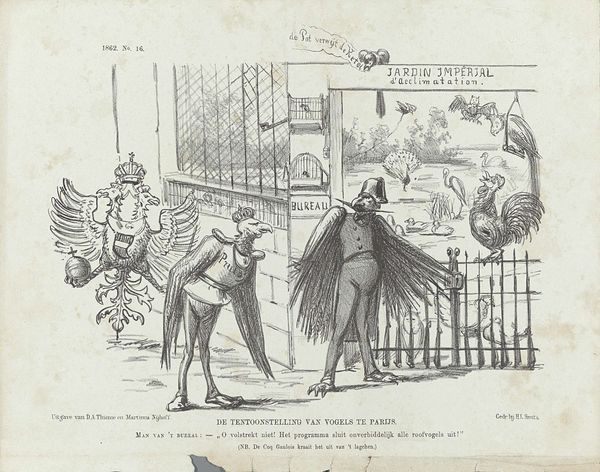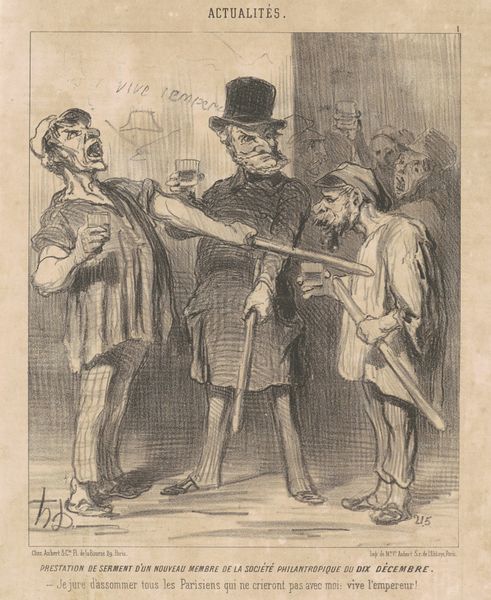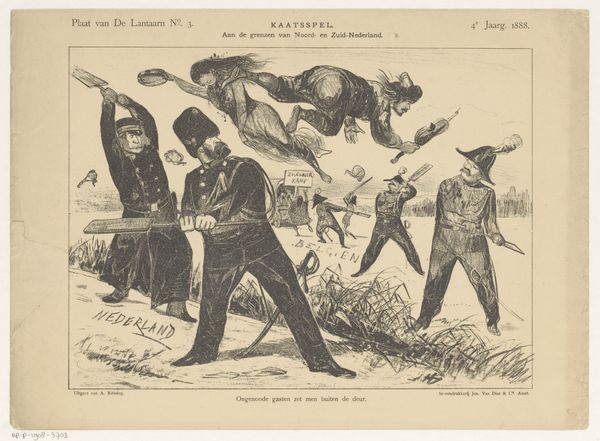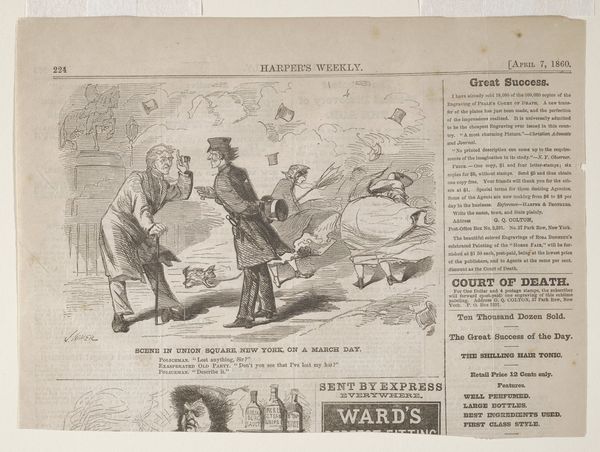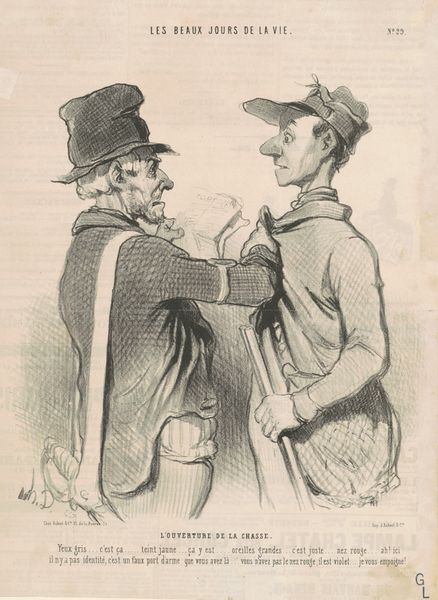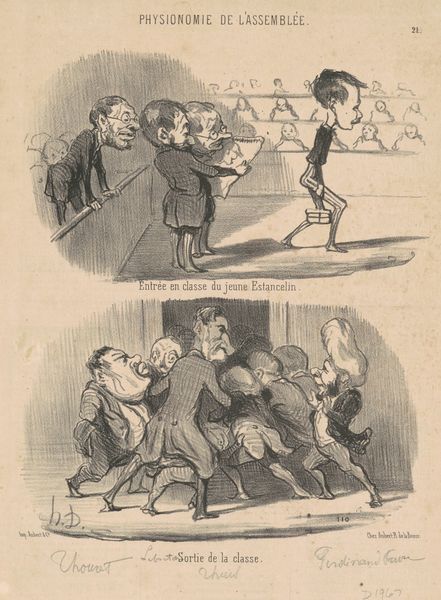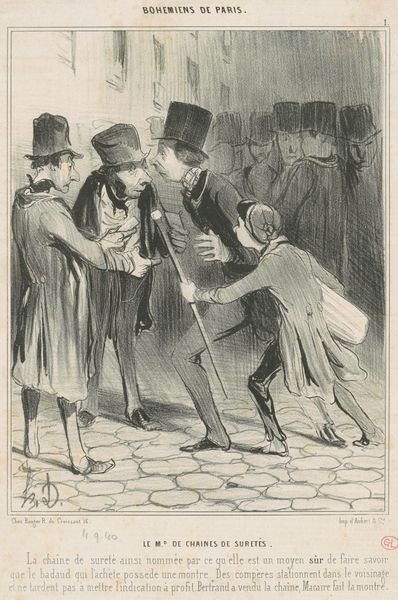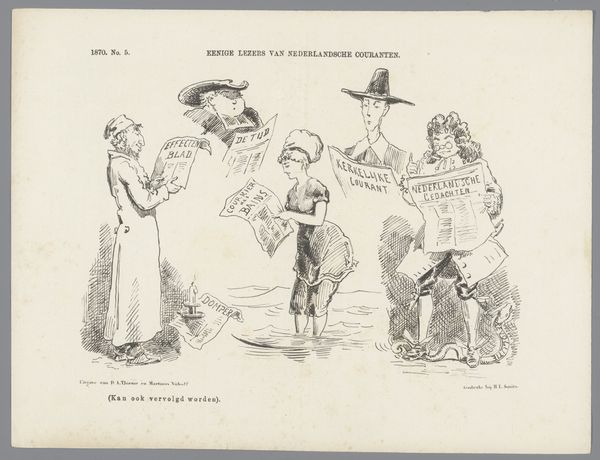
Scene in Union Square On a March Day (from "Harper's Weekly," Vol. IV) 1860
0:00
0:00
drawing, print
#
drawing
#
narrative-art
# print
#
caricature
#
ukiyo-e
#
cityscape
#
genre-painting
#
history-painting
#
academic-art
#
modernism
Dimensions: image: 4 3/4 x 6 3/4 in. (12.1 x 17.1 cm) sheet: 5 1/2 x 7 in. (14 x 17.8 cm)
Copyright: Public Domain
Curator: Winslow Homer's "Scene in Union Square on a March Day," published in Harper's Weekly in 1860, is before us. It's a wonderfully dynamic print. Editor: Dynamic is an understatement. This image explodes with movement, bordering on chaos. You can almost feel the March wind whipping off the page. It’s both humorous and… well, a little unsettling. Curator: Unsettling how? It presents as a genre scene, documenting urban life. Note the clear delineation of space, the classical rendering of the figures… Homer’s academic training shines through. Editor: But consider what's implied! A blustery day in Union Square becomes a social comedy but what is the role of the police? The befuddled upper-class man… This is class tension played out through the metaphor of a lost hat in a society stratified across visible, windy turmoil. Is this, in essence, what progress looks like, at the intersection of commerce, labor, and law? Curator: While I appreciate that reading, the immediate reading is focused on the masterful use of line. Observe how the swirling strokes give form to the wind and animate otherwise still objects like the top hats that become airborne, individual forms. And look at Homer's brilliant use of negative space—the whiteness of the print amplifies the feeling of a gusty day. Editor: And who has the privilege to wait out the weather, and who must brace it as a fact of life? Notice how the fleeing women are rendered versus the almost caricaturist stability of the man speaking to the police officer. These compositional choices are not neutral; they tell a story about power. Who has the agency to stop in the gale to have this conversation and what are the societal pressures felt across lines of race, class, and gender in this era of abolitionist movements? Curator: A thought-provoking interpretation! Perhaps we can agree that Homer's image works on multiple levels: aesthetically as a study in line and form, and, as you propose, socio-politically, as a subtle commentary on the realities of mid-19th century New York. Editor: Exactly! It's in teasing out these layers that we truly appreciate its power. This artwork challenges the viewer to find intersectionality within moments of social life.
Comments
No comments
Be the first to comment and join the conversation on the ultimate creative platform.
